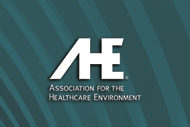ASHE, CDC and HRET join forces on infection control initiative
The Health Research & Educational Trust (HRET) and the Centers for Disease Control and Prevention are launching a three-year initiative to improve infection prevention and control efforts in U.S. hospitals. The goal is to strengthen infection control practices in targeted acute care hospitals and to specifically reduce central line-associated bloodstream infections, catheter-associated urinary tract infections, Clostridium difficile infections and methicillin-resistant Staphylococcus aureus infections.
As part of the project, HRET will work closely with the American Society for Healthcare Engineering (ASHE) to develop resources to help design and redesign hospitals in ways that reduce infection risks to patients and staff. Other project partners include the Association for Professionals in Infection Control and Epidemiology, University of Michigan, Michigan Health & Hospital Association, Keystone Center, HealthInsight QIN and Society of Hospital Medicine.
Also this week:
VA proposes rule to ensure safe environment in residential care facilities
The Department of Veterans Affairs is proposing to amend regulations governing the approval of a community residential care (CRC) facility. The amendments include prohibiting a CRC from employing individuals who have been convicted of certain crimes against a person or property, or found to mistreat, neglect or abuse residents or misappropriate resident property. It also would amend rules regarding the maximum number of beds allowed in a resident’s bedroom.
OSHA posts new resources for Hazard Communication Standard
The Occupational Safety & Health Administration has released new resources regarding its new Hazard Communication Standard, which is now aligned with the Globally Harmonized System of Classification and Labeling of Chemicals. The information covers the responsibility of manufacturers and employers with hazardous chemicals in their workplaces and goes over major changes to the standard.
NFPA accepting comments on new standard for water-based fire protection
The National Fire Protection Association Standards Council is in receipt of a New Project Initiation Request for the development of an ANSI Accredited Standard on hanging and bracing of water-based fire protection systems. The following topics of requirements are proposed for inclusion in a new standard for: automatic sprinkler systems, water mist systems, standpipe systems, foam-water sprinkler systems, fixed-spray systems, fire pumps, private fire service mains and water storage tanks.
The proposed project seeks to address hanging and bracing requirements for myriad water-based systems, not merely sprinkler systems, which is a topic addressed in chapter 9 of NFPA 13.
Study indicates too much foot traffic in and out of ORs may disrupt airflow
A secret shopper-style study conducted by Johns Hopkins researchers and published in the journal Orthopedics found that foot traffic in and out of operating rooms (ORs) could interfere with the space's airflow designs. Although most ORs are fitted with atmospheric pressure systems that allows air to flow out of the OR when doors open and prevents potentially contaminated air from flowing in, those systems can become overwhelmed when doors open too many times in quick succession or stay open too long.
Research suggests copper can help to prevent spread of respiratory viruses
New research from the University of Southampton has found that copper can effectively help to prevent the spread of respiratory viruses, which are linked to severe acute respiratory syndrome (SARS) and Middle East respiratory syndrome (MERS).
Animal coronaviruses that 'host jump' to humans, such as SARS and MERS, result in severe infections with high mortality. The Southampton researchers found that a closely-related human coronavirus — 229E — can remain infectious on common surface materials for several days, but is rapidly destroyed on copper.
American Cleaning Institute urges FDA to preserve critical antibacterial products
The American Cleaning Institute (ACI) is urging the Food and Drug Administration (FDA) to re-evaluate all data relevant to the safety and efficacy of antibacterial health care ingredients and make affirmative findings that they are generally recognized as safe and effective. ACI submitted detailed comments to FDA on the agency's proposed rules governing over-the-counter antiseptic health care products.
New data show EHR adoption incentives working
According to a new study using 2008–2014 nationwide data on electronic health record (EHR) adoption trends, 75 percent of U.S. hospitals had adopted at least a basic EHR system by 2014 — up from 59 percent in 2013. Also, 40.5 percent of hospitals had the capabilities needed to meet core Stage 2 meaningful use criteria — a major leap from 5.8 percent in 2013. However, small and rural hospitals still lagged behind.





